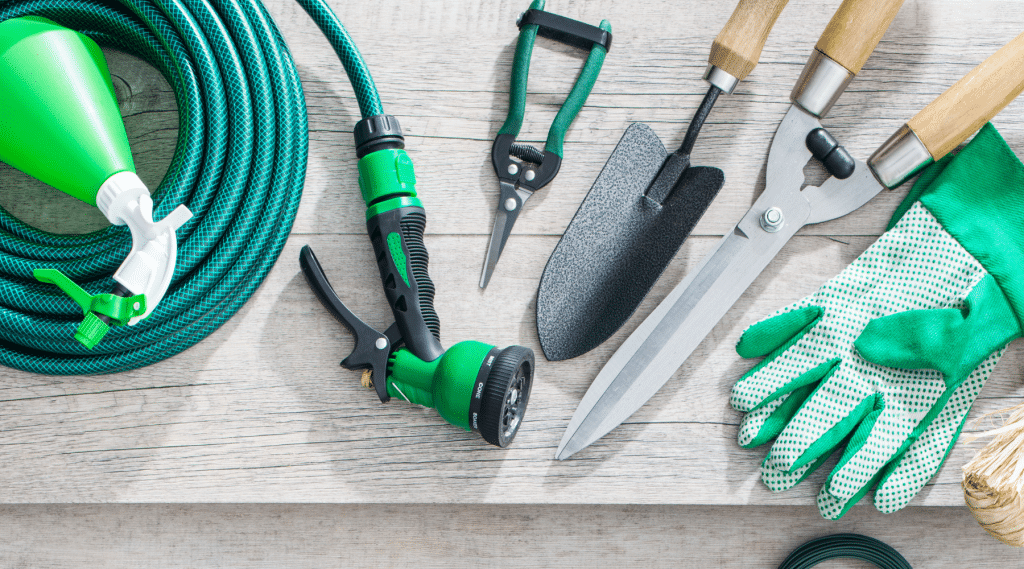
Are you fed up with poor results from using the wrong garden tools?
Gardening is a terrific way to get outside, exercise, and grow beautiful crops. To enjoy gardening, you need the right tools. The right gardening tools make gardening fun, efficient, and effective and get your job done.
This blog post has the valuable information you need when choosing the right garden and best landscaping tools. At the end of this blog, you’ll know which gardening tools to shop for best. You will reach your goals every growing season whether you’re a novice or an experienced gardener.
Let’s start making the perfect garden with the right gardening tools!
Most Essential Gardening Tools
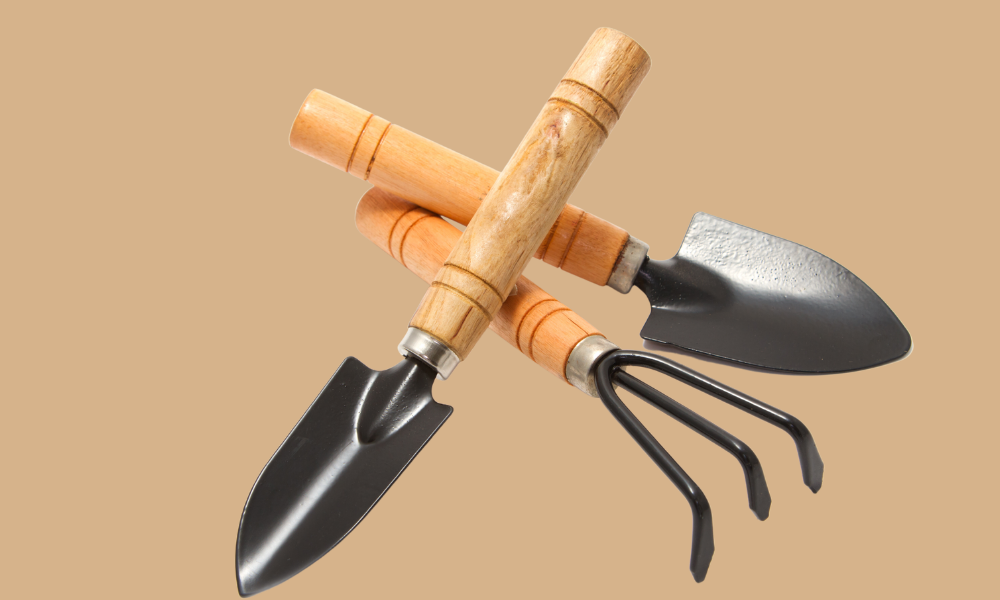
The term “garden hand tools” refers to various hand-held implements in discussions about gardening and landscaping. These gardening hand tools are perfect for tending your backyard garden. Gardening hand tools can be used for various activities, such as digging, transplanting, trimming, weeding, etc. Garden hand tools are essential to every gardener.
Here is a curated list of essential gardening tools.
1. Hand trowel:
A garden trowel is handheld tool for digging holes, transplanting seedlings, and weeding. The material is important to consider, as it can affect the comfort and durability of the tool.
The blade size and form are also important. A wider blade can dig larger holes or move more soil and is perfect for rocky soil. A narrower blade may be ideal for planting in compact locations.
Some trowels have pointy tips for precision digging, while others have rounded blades for scooping. A hand made garden trowel is perfect for caring for delicate plants and sowing seeds.
2. Garden Fork:
Garden fork has flat tines, and fork tines. It can be used for digging the ground, aerating yard soil, turning compost, removing weeds, harvesting root vegetables, and mixing fertilizer. A garden fork is a versatile tool used for various gardening tasks, including digging, lifting, and turning soil.
3. Garden Gloves:

You may not consider gloves as a garden tool, but they are. Gloves prevent cuts, blisters, and other damage while doing your tasks. They protect your skin from soil contaminants and allergies. Gloves protect and increase grip, making tools and plants easier to handle.
Choose gloves that fit properly and are pleasant for long wear. In warmer months, breathable gloves can keep your hands cool and dry. Any gardener needs gloves to work more comfortably and safely. Hardy Garden offers Claws Gardening Gloves that can easily handle various gardening tasks without hurting yourself.
4. Gardeners Hose:
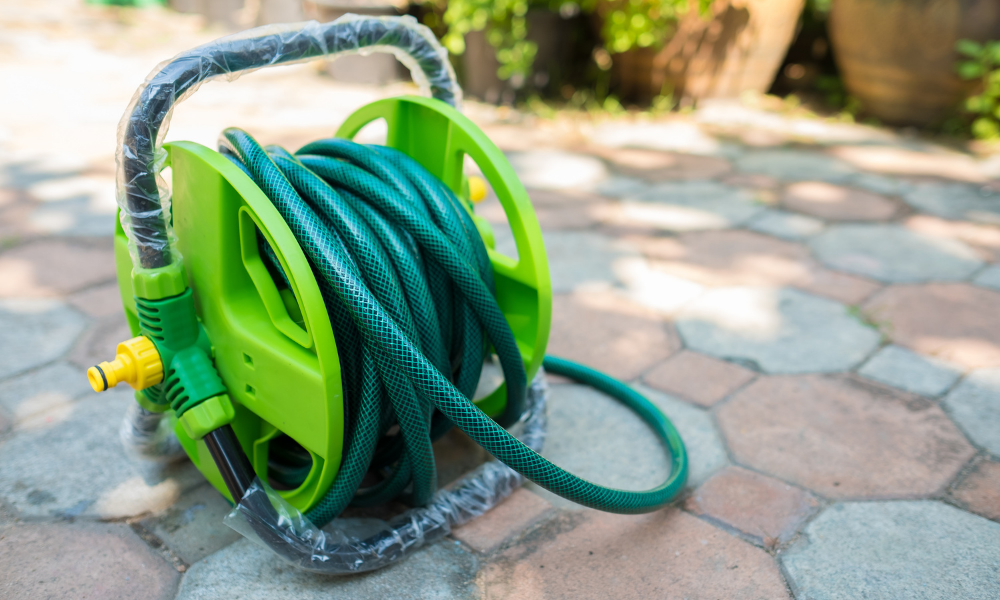
A gardeners hose is a long, flexible tube that connects to a faucet or taps to water your crops. A gardener’s hose is ideal for watering vast areas fast and efficiently, especially far-away crops.
5. Watering Wand:
A watering can is a container with a spout for hand-watering plants, container garden or flower bed and hanging baskets and pots. A watering wand is perfect for watering delicate plants that a gardener’s hose would damage.
6. Leaf Rake:
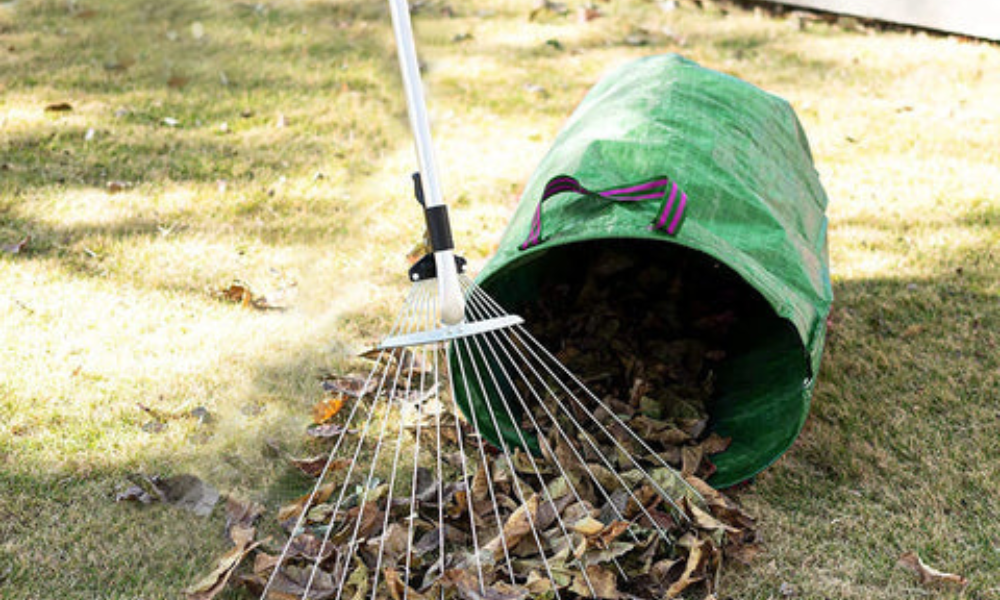
This rake is a versatile tool essential for maintaining a beautiful yard. It is useful for removing debris, gathering large piles of leaves. Leaf rake is perfect for cleaning your yard especially during spring and autumn.
7. Garden rake:
Garden rake is a tool for smoothing garden beds. The type of rake, material, size, tines, and any additional features is important to consider. Look for rakes with sturdy steel tines and a comfortable grip. For working around bedding plants, a rake with flat steel tines may be a good choice to avoid damaging crops or disturbing the soil.
8. Wheelbarrow:
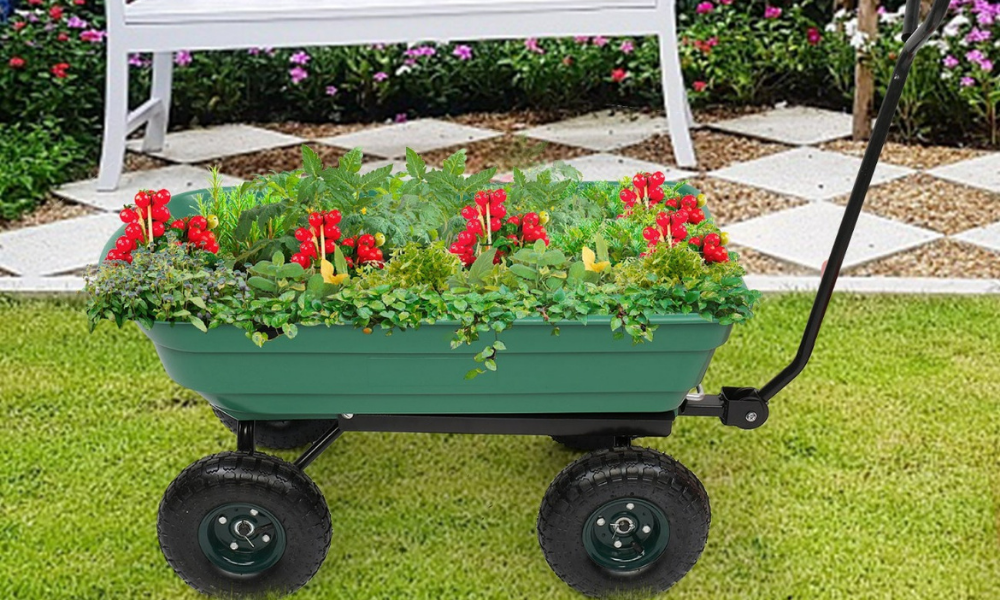
For ages, the wheelbarrow has been a vital and adaptable garden tool. Aside from its utility, the wheelbarrow can also use as a temporary workspace. It simplifies and saves gardeners time and effort in garden and landscape projects.
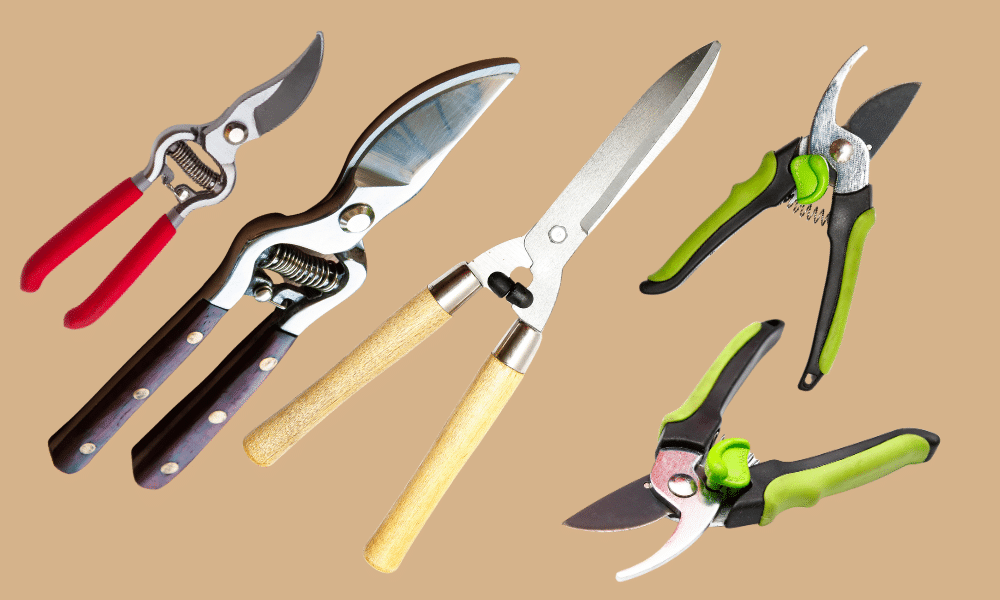
Garden pruners are perfect for cutting, shaping, and maintaining plants in a garden. Pruning tools are also essential landscaping tools. They are available on the market, each designed for a distinct pruning function.
Below are some of the most prevalent varieties of garden pruners and their uses:
10. Bypass Pruners
The most commonly used pruners, are designed to make clean, precise cuts on live plants, giving you a clean cut without crushing the stem. Useful for trimming flower stems, deadheading, harvesting herbs, and pruning houseplants.
11. Anvil Pruners
They are ideal for cutting dead or woody stems and branches. They can crush live plants if not used carefully.
12. Ratchet Pruners
Ratchet pruners produce many cuts with less effort, making them excellent for thicker branches. These are bypass pruners with a ratcheting mechanism for staged cutting.
13. Pole Pruners
They have long handles that allow you to reach and trim branches that are out of reach. They have a pruning saw or bypass pruner at the end of a long pole and are ideal for trimming trees and shrubs.
To avoid plant damage and injury, use the appropriate pruning tools. You can maintain a healthy plant and yard with the right pruning tool.
14. Spade Shovels:
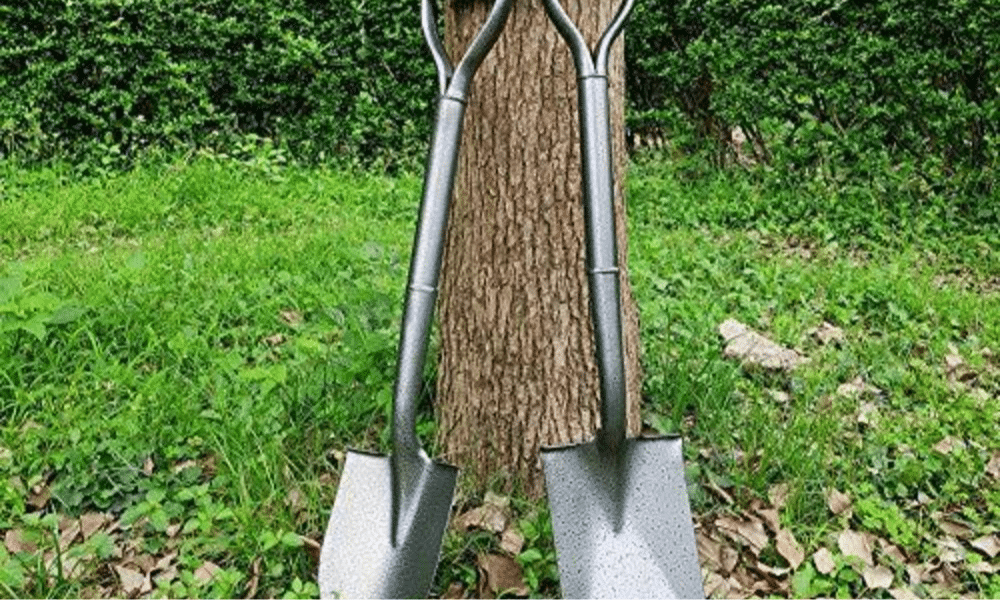
Home gardeners need shovels and spades. These are essential in digging holes, transplanting, planting bulbs, lifting sod, and moving soil. Shovels are also useful in mixing soil amendments. They feature wooden handles, a sharp blade, a narrow and pointed tip, and a flat top edge for digging holes in the ground, trenches, and dirt. This tool is useful for scooping up the mulch and distributing it evenly.
You need a good shovel to make the job easier. Look for shovels with sturdy, sharp blades and comfortable handles.
15. Lawnmower:
A lawn mower cuts grass to a uniform height. There are different types, such as push, self-propelled, and riding mowers. Lawnmowers are essential for maintaining a healthy lawn.
It has different types that you can choose from depending on your needs. Some types available in the market are push, self-propelled, and riding mowers.
16. Electric Grass for Clippers:
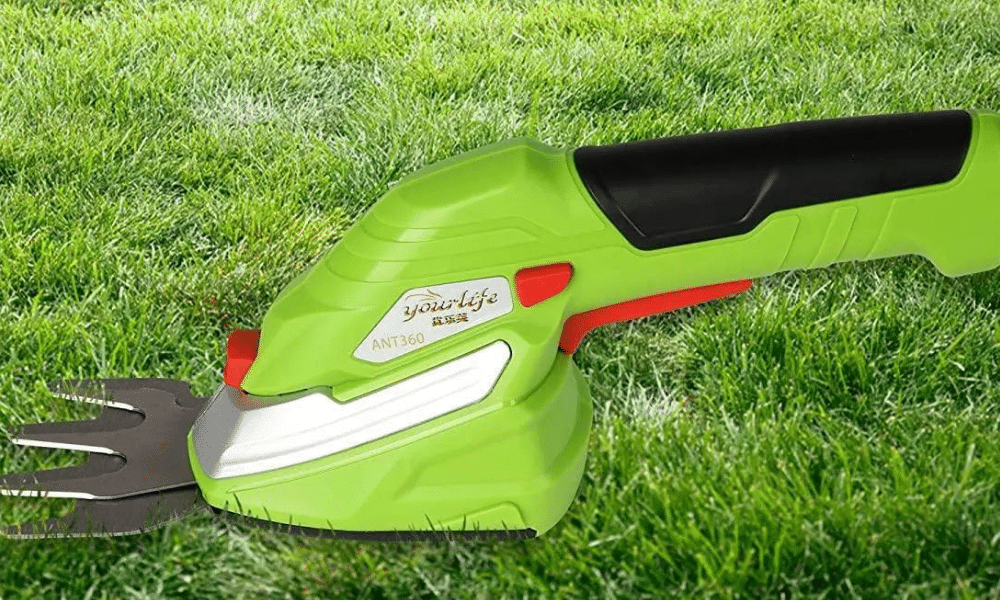
An Electric Grass for Clippers is a powerful tool for trimming hedges and shrubs to shape and maintain them. Electric grass clippers with short handles can be an excellent choice for small yards or gardens or for trimming in hard-to-reach areas. This grass trimmer will keep your yard in good shape.
17. Leaf Blower:
A leaf blower blows leaves and debris from the yard, driveways, and other areas. They come in two types: electric and gas-powered.
18. Chainsaw:
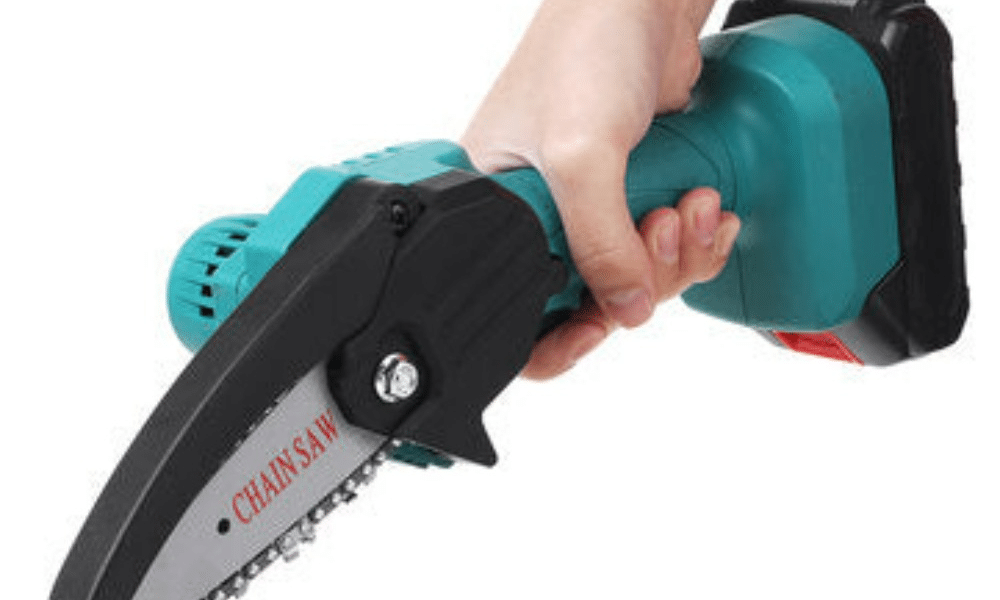
A chainsaw or a mini chainsaw is a powerful tool for cutting trees, branches, or dead wood. It is essential for tree pruning and more. This powerful tool can make cutting, trimming, and pruning much easier.
19. Cultivator:
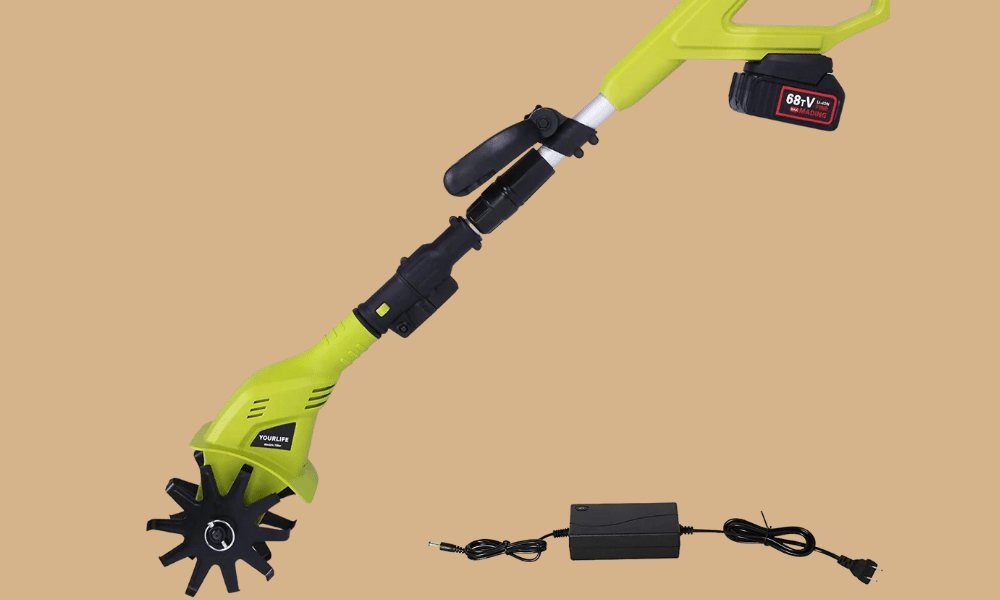
A cultivator is a powerful tool for breaking up soil, removing weeds, and aerating soil. It is especially useful for preparing a garden for planting. They come in two types: electric and gas-powered.
22. Weeding Hoe:
It makes removing weeds from your garden easy without bending down and pulling them out by hand. With the weeding hoe, you can quickly and easily remove weeds between plants, along garden edges, and in other hard-to-reach areas.
23. Garden Sprayer:
This Pressure Pump Sprayer helps you to quickly water your potted plants and spray your plants with organic pests control.
24. Garden Soil Testing Kit:
The soil moisture meter test kit lets you know when to water your plants soil and enhance the growth of your plants. It’s a necessary tool for outdoor & indoor plants, gardens, lawns, vegetables, etc. Take the guesswork out of knowing when your plants need water.
25. Hose Reels:
This Hose Cart with Wheel is ultimate solution for convenient and organized hose storage! This innovative Wheeled Hose cart is designed to make watering your garden, lawn, or patio a breeze. It provides a neat and organized storage solution for your hose, while also making it easier and more convenient to water your garden.
Depending on the type of gardening you’re doing, there are many other garden tools that you might find useful. Remember that by using power tools carefully, you can avoid injury.
Tips for choosing garden tools:
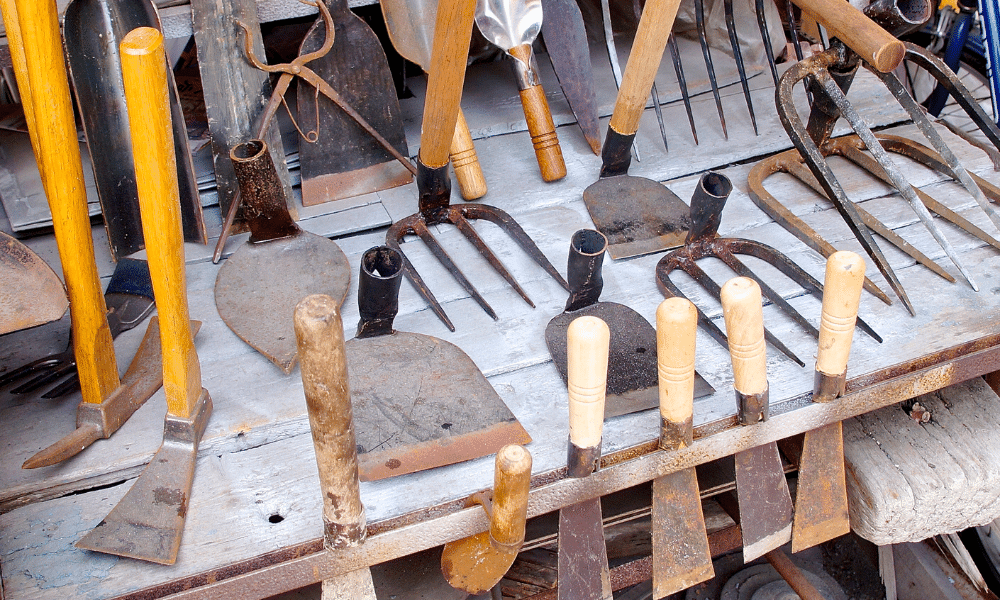
The appropriate tools can make gardening easier and more fun. But it’s hard to choose from so many tools.a make gardening easier and more fun. But it’s hard to choose from so many tools.
1. Consider your needs:
Think about what type of gardening you’ll be doing, how big your garden is, what kind of plants you’ll be growing, and how much time you’ll be spending in your garden. This will help you decide what types of tools you’ll need.
2. Know your garden tools:
Understanding your garden instrument helps you pick the proper ones. Knowing the right equipment and its purposes will help you choose them. Learning their applications lets you choose tools to maintain your garden and keep your plants healthy and beautiful.
3. Quality and durability:
High-quality, long-lasting garden tools save money. Inexpensive tools may seem sufficient, but they break or wear out quickly, requiring more frequent replacement. Seek high-quality equipment with good weight and balance.
4. Ergonomically designed tools:
Gardening can be physically demanding, and using a tool that minimizes strain is crucial. Choose equipment that fits your height and comfort by having handles at the proper length and manageable weight.
5. Consider storage:
Garden tools need adequate storage. Look for hanging hooks or other storage solutions to organize and access tools.
6. Budget:
Setting a budget is my best garden tool suggestion. Before buying, set a budget. This will help you choose and not overpay. Note that pricey instruments are not always ideal. Find affordable, sturdy, and user-friendly tools. You can obtain affordable, high-quality instruments with a little research and consideration.
By following these tips, you can choose the right garden instrument for your needs and make tending your garden easier and more enjoyable.
Maintaining Garden and Landscape Tools
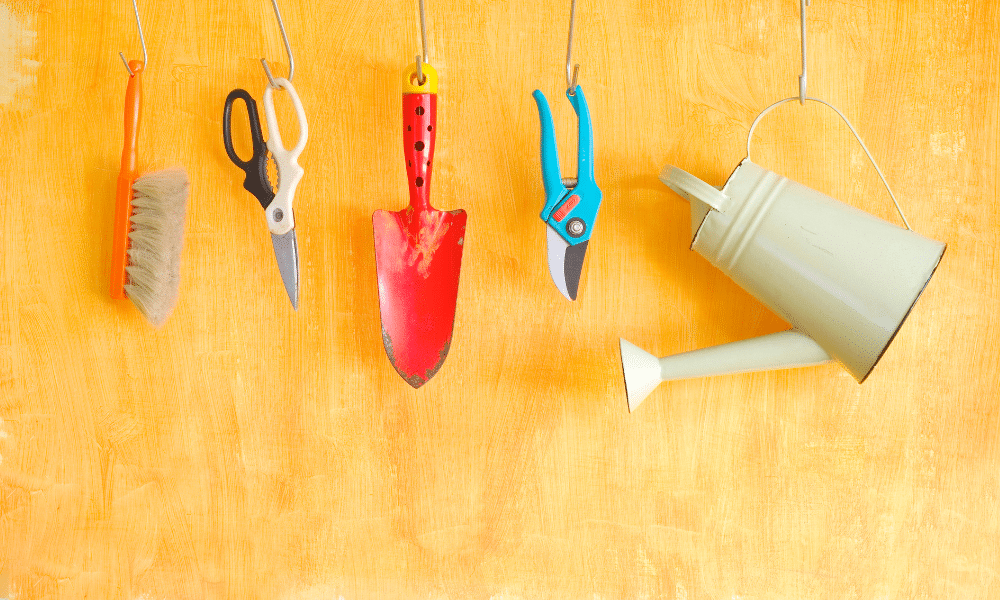
- Clean the dirt and dry your tools after each use. Clean blades and surfaces with a stiff-bristled brush. To avoid rust, dry them with a cloth.
- Sharpen your tools regularly. Dull tools can damage plants and require more effort to use, which can cause strain and injury. Use a sharpening stone or a file to sharpen the blades.
- Oil metal parts of your tool. This will be useful in warding off corrosion and rust. After cleaning and sharpening, wipe the metal surfaces with a cloth dipped in light machine oil or mineral oil.
- Keep your tools in your garden shed, storage box, or a dry place out of direct sunlight to prevent rust and deterioration. Hang or store them upright to prevent damage to the blades or edges. Storing them properly in your will extend their useful life.
- Over time, screws and bolts can come loose, which can cause them to malfunction or break. This can also be a safety hazard. Check for loose parts regularly and tighten them as needed.
You may visit our blog post at hardygarden.com for a more detailed and comprehensive guide in maintaining your garden and landscaping tools.
In conclusion, gardening tools are essential for maintaining a healthy garden, increasing its yields, and simplifying the gardening experience. Basic gardening tools such as gloves, rakes, and pruners are essential. Power tools are ideal for tasks that require more power and speed, making your work easier.
You can now shop for new garden tools with our helpful guide. Investing in high-quality tools that suit your needs is the key to a flourishing garden and making the job easier and more efficient.
Shop for your new tools at Hardy Garden now! Get started, and Let’s Grow Together!